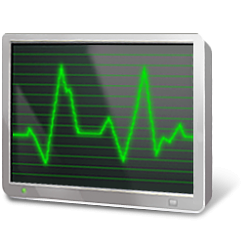How to Analyze Component Store (WinSxS folder) in Windows 10
One commonly asked question is can I delete the WinSxS folder to regain some disk space? The short answer is no. However, there are ways to reduce the size of the WinSxS folder.
The component store (WinSxS folder) contains all the components that make-up Windows to allow you operate your system. These components are kept to rollback any problematic change or to repair a file that becomes corrupted.
The WinSxS folder is located in the Windows folder, for example "C:\Windows\WinSxS". It’s the location for Windows Component Store files. The Windows Component Store is used to support the functions needed for the customization and updating of Windows. Here are some examples of how the Windows Component Store files are used:
- Using Windows Update to install new component versions. This keeps systems secure and up-to-date.
- Enabling or disabling Windows features.
- Adding roles or features using Server Manager.
- Moving systems between different Windows Editions.
- System recovery from corruption or boot failures
- Uninstalling problematic updates
- Running programs using side-by-side assemblies
The Windows Component Store was first introduced in Windows XP to support side by side assemblies. Beginning in Windows Vista, the component store was enhanced to track and service all of the components that make up the operating system. Those different operating system components track objects such as files, directories, registry keys, and services. Specific versions of components are then collected together into packages. Packages are used by Windows Update and DISM to update Windows. The components and packages used in a Windows installation are processed by the Windows Component Store. Determining the size of the Windows Component Store is complicated by the fact that many of the files are used by Windows from directories outside the Windows Component Store using a technique known as hard linking. In such cases, the files from a component version appear both inside and outside the Windows Component Store. By using hard linking Windows is able to appear to keep multiple copies of the same file without actually taking the added space for multiple copies.
For more information about the Windows Component Store (WinSxS folder), see:
This tutorial will show you how to determine the actual size of the component store (WinSxS folder) and if cleanup is recommended in Windows 10.
You must be signed in as an administrator to analyze the component store (WinSxS folder).
For a Windows 11 version of this tutorial, see:
Analyze and Clean Up Component Store (WinSxS folder) in Windows 11
Here's How:
1 Open an elevated command prompt.
2 Copy and paste the command below into the elevated command prompt, and press Enter. (see screenshot and table below)
Dism.exe /Online /Cleanup-Image /AnalyzeComponentStore
3 Based on the analysis you can determine the overhead of the WinSxS folder by taking the sum of the backups and disabled features size with the cache and temporary data size.
In this example, the reported size of the Component Store is 7.16 GB, but the actual overhead (the sum of the "backups and disabled features" size (ex: 768.90 MB) and "cache and temporary data" size (ex: 19.03 MB) is 787.93 MB.
The actual size of Component Store in this example is 7.11 GB.
4 If Component Store Cleanup Recommended says No, then there is nothing else that needs to be done.
5 If Component Store Cleanup Recommended says Yes, then you could clean up the component store (WinSxS folder) (click on link) to reduce its size.
Item Description Windows Explorer Reported Size of Component Store This value the size of the WinSxS folder if computed by File Explorer. This value doesn’t factor in the use of hard links within the WinSxS folder. Actual Size of Component Store This value factors in hard links within the WinSxS folder. It doesn’t exclude files that are shared with Windows by using hard links. Shared with Windows This value provides the size of files that are hard linked so that they appear both in the component store and in other locations (for the normal operation of Windows). This is included in the actual size, but shouldn’t be considered part of the component store overhead. Backups and Disabled Features This is the size of the components that are being kept to respond to failures in newer components or to provide the option of enabling more functionality. It also includes the size of component store metadata and side-by-side components.This is included in the actual size and is part of the component store overhead. Cache and Temporary Data This is the size of files that are used internally by the component store to make component servicing operations faster. This is included in the actual size and is part of the component store overhead. Date of Last Cleanup This is the date of the most recently completed component store cleanup. Number of Reclaimable Packages This is the number of superseded packages on the system that component cleanup can remove. Component Store Cleanup Recommended This is a component store cleanup Y/N recommendation. Cleanup is recommended when performing a cleanup process may reduce the size of the component store overhead.
That's it,
Shawn Brink
Related Tutorials
- How to Clean Up Component Store (WinSxS folder) in Windows 10
- How to Repair Windows 10 Image using DISM
- How to Open and Use Disk Cleanup in Windows 10
- How to Delete Windows.old Folder in Windows 10
Analyze Component Store (WinSxS folder) in Windows 10

Analyze Component Store (WinSxS folder) in Windows 10
How to Analyze Component Store (WinSxS folder) in Windows 10Published by Shawn BrinkCategory: Performance & Maintenance
12 Aug 2022
Tutorial Categories


Related Discussions



